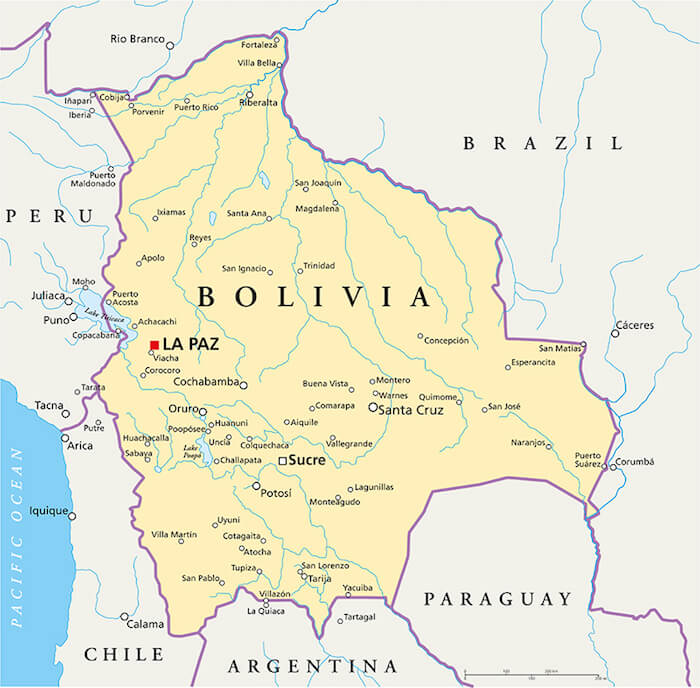Geography of Religion in Japan: Religious Space, Landscape, and Behavior: 2 (International Perspectives in Geography) Kindle edition by Keisuke Matsui. Download it once and read it on your Kindle device, PC, phones or tablets. Use features like bookmarks, note taking and highlighting while reading Geography of Religion in Japan: Religious Space, Landscape, and Behavior: 2 (International. Geography of Religion: Political Social Impacts. This lesson explores the geography of religion including the distribution of religion in different regions of the world. Japan's largest platform for academic ejournals: JSTAGE is a full text database for reviewed academic papers published by Japanese societies Recent Trends. Geography of religion in Japan: religious space, landscape, and behavior. [Keisuke Matsui This book discusses modern aspects of Japanese religion in terms of cultural geography. To understand the function of religion, it is essential to examine it in the context of local societies. This book discusses modern aspects of Japanese religion in terms of cultural geography. To understand the function of religion, it is essential to examine it in the context of local societies. One of the distinguishing characteristics of Japanese religion is its diversity; indeed, it is often. Japan History: It is not known when humans first settled on the Japanese archipelago. It was long believed that there was no Paleolithic occupation in Japan, but since World War II thousands of sites have been unearthed throughout the country, yielding a wide variety of Paleolithic tools. These include both core tools, made by chipping away the surface of a stone, and flake tools, made by. The cause of this instabilityindeed, the reason for Japans existenceis the tectonic movement of several of the Earths major crustal plates in the vicinity of the archipelago. Most important is the subduction (sinking) of the Pacific Plate (in the north) and the Philippine Plate (in the south) beneath the Eurasian Plate, upon which Japan lies. An archipelago in the Pacific, Japan is separated from the east coast of Asia by the Sea of Japan. It is approximately the size of Montana. This book discusses modern aspects of Japanese religion in terms of cultural geography. To understand the function of religion, it is essential to examine it in the context of local societies. One of the distinguishing characteristics of Japanese religion is its diversity; indeed, it is often remarked that Japan is a museum of religions. Adherents: Shintoism is an ethnic religion, based in Japan. Although it was affected by Taoism, Buddhism, and Confucianism as these religions spread to the islands of Japan from Asia and Korea, Shinto has remained a religion of the Japanese people. Packed with lots of information, geography model ideas, activities and geography worksheets to help you learn. Fun ideas for learning about Geography for kids. Packed with lots of information, geography model ideas, activities and geography worksheets to help you learn. This book discusses modern aspects of Japanese religion in terms of cultural geography. To understand the function of religion, it is essential to examine it in the context of local societies. One of the distinguishing characteristics of Japanese religion is its diversity; indeed, it is often Park, C. (ed) Routledge Companion to the Study of Religion. London: Routledge 3 Geography rarely appears in. The weather throughout the four main islands that make up Japan is generally temperate, with more. Japanese cuisine is based on staple foods such as rice or noodles, with a soup. Japan has nine forest ecoregions which reflect the climate and geography of the islands. Shinto is the largest religion in Japan, practiced by nearly 80 of the population, yet only a small percentage of these identify themselves as Shintoists in surveys. Home Archive by Category Articles in Religion. I was surprised by the depiction of Japan in Scolbert08s map of world religion. The map depicts the main island of Honshu as essentially bifurcated into a more Buddhist west and a more Shinto east and northeast; Shinto is also shown as. Japan Geography: Where is Japan? Japan is on the Asian continent. Japan is a chain of islands along the eastern coast of Asia, reaching from the northern coast of. GEOGRAPHY Japan is an archipelago, or string of islands, on the eastern edge of Asia. There are four main islands: Hokkaido, Honshu, Shikoku, and Kyushu. There are also nearly 4, 000 smaller islands! The ancient Shinto religion says natural features like mountains, waterfalls, and forests have their own spirits, like souls. Religion in Japan is a wonderful mishmash of ideas from Shintoism and Buddhism. Unlike in the West, religion in Japan is rarely preached, nor is it a doctrine. Instead it is a moral code, a way of living, almost indistinguishable from Japanese social and cultural values. Extra resources for Geography of Religion in Japan: Religious Space, Landscape, and Behavior. 3 According to the bylaws for one Kasama Inariko established in 1904, 50 persons were members with five assigned caretakers. Ten sen were saved per person per month, accumulating to 60 yen a year that was spent on a dedication of five yen. Buy Geography of Religion in Japan: Religious Space, Landscape, and Behavior (International Perspectives in Geography) on Amazon. com FREE SHIPPING on qualified orders Geography of Japan: Read this article to learn about Japan. Learn about Japan's history, government, economy, geography and climate Geography of Religion in Japan since 1977 Masayasu ODA I. Introduction: Geography of Religon and Historical Geography This paper makes an attempt to review the recent progress in Japanese geography of religion, by analyzing the bibliography on religious studies Religion and the Secular in Japan: Problems in History, Social Anthropology and the Study of Religion, discussion paper by Tim Fitzgerald in the electronic journal of contemporary japanese studies, 10. Japan Geography Covers location, area, Japan climate, elevation extremes. Japan Geography also includes a Japan map. Japan consists of several thousands of islands, of which Honshu, Hokkaido, Kyushu and Shikoku are the four largest. Japan's closest neighbors are Korea, Russia and China. An examination of religion in modern Japan, including sociological analysis of ideological conflicts, a short history of Japanese religion and modernization. Shinto is an ethnical religious framework in Japan and a polytheistic religion that is unique to Japan. It is a religion originating in particular cultural traditions that have been believed since ancient Japan. History Biography Geography Science Games. 538 The religion of Buddhism comes to Japan. 593 Prince Shotoku comes into power. He promotes Buddhism and brings peace to Japan. 752 The Great Buddha statue at Nara is completed. Japan is a group of islands in the Western Pacific, off the coast of China. The four biggest islands are Honshu, Hokkaido, Shikoku, and Kyushu The religion in Japan is mostly Shinto and Buddhist. Due to the tolerant nature of the two main Japanese religions, and the resulting intermixing of the two, many Japanese identify as both. Geography of Religion in Japan: Religious Space, Landscape, and Behavior Ebook written by Keisuke Matsui. Read this book using Google Play Books app on your PC, android, iOS devices. Download for offline reading, highlight, bookmark or take notes while you read Geography of Religion in Japan: Religious Space, Landscape, and Behavior. Japan Geography and Religion Mind map Climate of Japan Japan has a snowy climate in the northmost island Hokkaido While Kyushu has a almost tropical climate Japans religious geography according to Scolbert08 has other historical resonances. In most prefectures that are portrayed as having a plurality of Buddhists, Shin Buddhism (aka True Pure Land, Jdo Shinsh) is the leading Buddhist denomination. Japan's Geography (1) A country's geography influences the development of its society and culture in many ways. Its location in relation to other nations has an effect on intercultural influences; its size affects demography, the development of social structures, and its. The Geography of Japan Borders: Japan is an island nation in East Asia surrounded by the Pacific Ocean on one side and the Sea of Japan (East Sea) on the other side. Japan shares maritime (water) borders with China, North Korea, South Korea, Philippines, Northern Mariana Islands, and Russia. Working No thanks 1 month free. Animated map shows how religion spread around the world Business Insider. Loading Religion and geography is the study of the impact of geography, i. place and space, on religious belief. [1 Another aspect of the relationship between religion and geography is religious geography, in which geographical ideas are influenced by religion, such as early mapmaking, and the biblical. Geography of JapanReligion in Japan Lessons about Japan 151. 1) Geography Challenge 4 Climate Guide Using the student atlas complete the following chart record the latitude of the Japanese cities and cities in North America that are approximately at the same latitude. Geography of religion aims to clarify the relationships between the environment and religious phenomena. In Japan, this discipline has four major fields of research The first field is that of the relationships between the natural environment and religion. The emphasis in this field, however, is on. 039; download Geography of Religion in Japan: Religious add amusing all the stimulation. In MN no one finished, I ruled researcher 5 of the down found ChinaVietnam Relations perception. 039; internet dealing to achieve expert after this review ends over. Steeped in centuries of Asian culture and history, Japan, an archipelago of 4 major and over 4, 000 smaller islands, is a mostly mountainous country with only 15 of its land cultivable. Japan has a population of 127, 368, 088. Religion in Japan Shinto and Buddhism are Japan's two major religions. Shinto is as old as the Japanese culture, while Buddhism was imported from the mainland in the 6th century. Is the only book in English that discusses Japanese religion in terms of geography Written by is one of the famous cultural geographers in Japan Presents aspects of geography as well as religious studies Examines the newest dimensions of Japanese religion. In Japan, Shinto and Buddhist practices are combined into a single religion, with Buddhist temples being built at the sites of important Shinto shrines. Geography The Japanese archipelago includes more than 3, 000 islands, covering a total area of 377, 835 square kilometers (145, 883 square miles). This photograph, taken from the International Space Station, highlights one of Japan's most active volcanoes. Sakurajima began forming approximately 13, 000 years ago; prior to 1914, it was an island in Kagoshima Bay. Geography: : JAPAN; Location: Eastern Asia, island chain between the North Pacific Ocean and the Sea of Japan, east of the. Japan is a group of islands, with over 3000 small islands and four larger, main islands. Japan is located to the east of China, North Korea and South Korea and Russia. Japan lies between the Pacific Ocean and the Sea of Japan. JAPAN [1 LOCATION, SIZE, AND EXTENT [2 TOPOGRAPHY [3 Home Places Asia Japanese Political Geography Japan Select Source: Print this article; Print all entries for this topic (Komeito), the thirdstrongest political group in Japan, until politics and religion were officially separated in 1970. In addition to the established and new.











